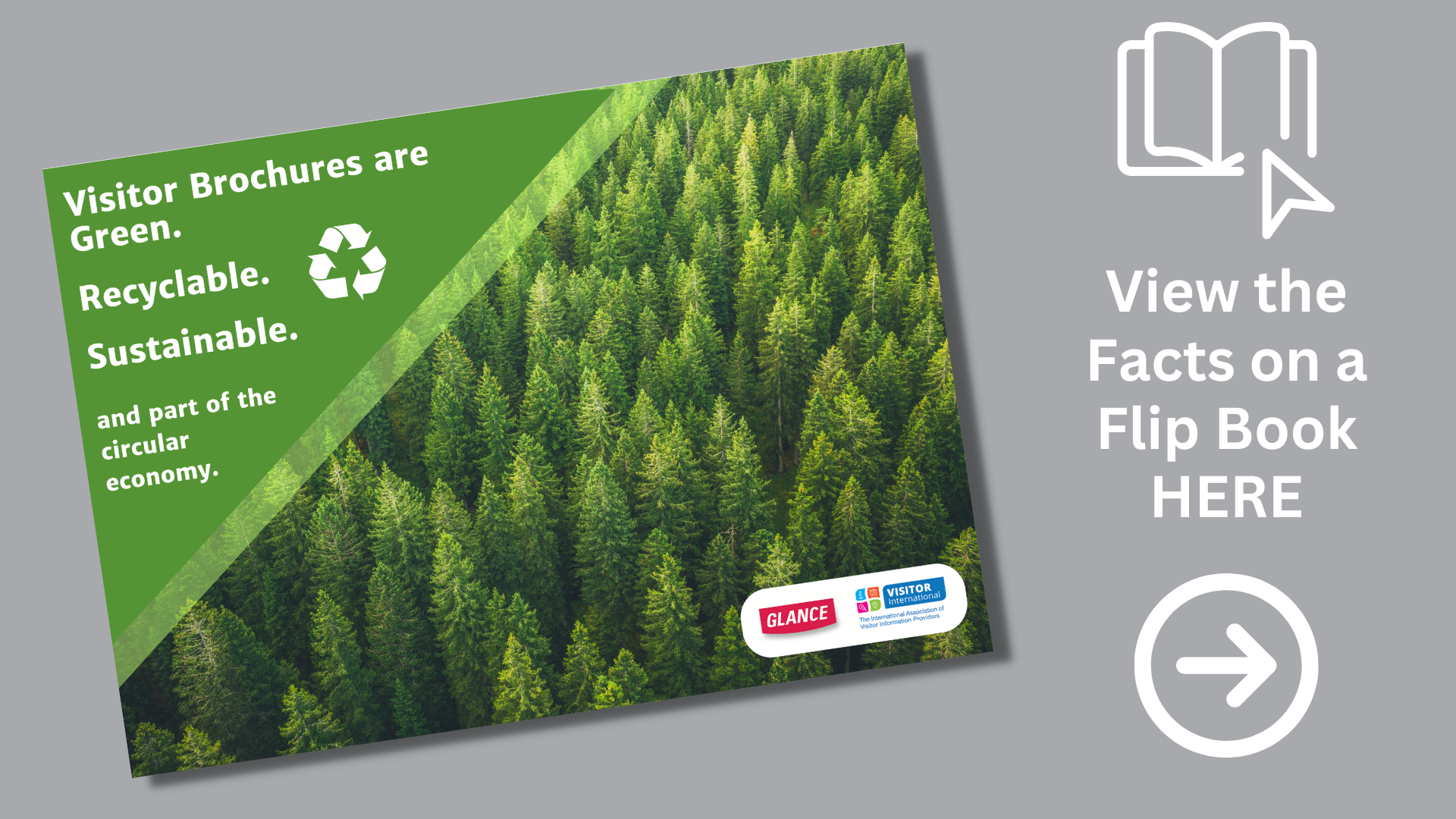Printed visitor brochures and maps are hugely influential in guiding visitors to great experiences around Ireland, particularly during trips. They are also loved by visitors and are sustainable.
Brochures are made from sustainable materials that are an important part of the circular economy. Paper is made from renewable resources, namely wood, and can be recycled and reused many times without losing its quality. This makes it an environmentally friendly choice that helps to reduce waste and minimize the use of non-renewable resources. It’s why, for instance, supermarkets are moving away from plastics which can be damaging to our oceans and the environment, toward paper and board for packaging. They are demonstrating their commitment to sustainability and to appeal to consumers who are looking for more environmentally conscious options.
In the circular economy, the concept of “reduce, reuse, and recycle” is applied to keep resources in use for as long as possible. Paper is a perfect example of this, as it can be easily recycled up to seven times before the fibres become too short and weak to be used again. Once it can no longer be recycled, paper can be used for energy production or as a source of raw materials for other products.
Furthermore, the production of paper has become more sustainable over time, with modern production methods using less water, energy, and chemicals than in the past. In addition, the industry, particularly in Europe, has implemented responsible forestry practices to ensure that trees are being grown and harvested in a sustainable and responsible manner.
Here are a few facts to note.
74% of paper is recycled – one of the world’s most recycled products: In Europe, 74% of paper and 83% of cardboard packaging is recycled. This share will continue to grow with a target of 90% by 2030. In addition, paper can be recyc led up to seven times before the fibres become too short and weak to be used again. However, even then, the fibres can be used as raw materials for other products. Currently, in Europe, paper is recycled on average 3.8 times.
led up to seven times before the fibres become too short and weak to be used again. However, even then, the fibres can be used as raw materials for other products. Currently, in Europe, paper is recycled on average 3.8 times.
In Europe, paper comes from managed forests: In Europe, where almost all primary forests are protected, paper comes from sustainably managed forests where the cycle of planting, growing, and logging is carefully controlled.
In Europe, forests have been growing by 1,500 football pitches every day: When managed, paper is a crop, like fruit and vegetables. The trees used for paper are planted, harvested, and new trees replace them. For instance, between 2005 and 2020, European forest cover grew by 58,390 km2 – an area larger than Switzerland and the equivalent of almost 1,500 football pitches of forest growth every day.
Paper is biodegradable and harmless to the environment. Paper is biodegradable; it breaks down naturally and rapidly in the environment without causing harm to wildlife or ecosystems. Paper takes just 2 to 6 weeks to break down in the environment; plastics take up to 400 years to break down and can release harmful chemicals, and aluminium can take between 400 and 500 years to break down.